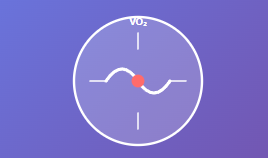Best Tool for VO2 Max Calculator
Advanced Cardiovascular Fitness Assessment – Measure Your Aerobic Capacity with Precision
Calculate Your VO2 Max
Your VO2 Max Result
ml/kg/min
Fitness Category
—
Percentile Rank
—
Calorie Burn Rate
—
Training Zone
—
Personalized Recommendations
What is VO2 Max?
VO2 Max, or maximal oxygen uptake, is the maximum amount of oxygen your body can utilize during intense exercise. It’s measured in milliliters of oxygen per kilogram of body weight per minute (ml/kg/min). This metric is considered the gold standard for measuring cardiovascular fitness and aerobic endurance.
When you exercise, your muscles require oxygen to produce energy. VO2 Max represents the upper limit of your body’s ability to transport and use oxygen during physical activity. A higher VO2 Max indicates better cardiovascular fitness and endurance capacity.
Why VO2 Max Matters
Your VO2 Max is influenced by several factors including genetics, age, gender, training status, and altitude. While genetics play a role, regular aerobic training can significantly improve your VO2 Max by 15-25% over several months. Athletes in endurance sports typically have much higher VO2 Max values than sedentary individuals.
🏃 Elite Athletes
Professional endurance athletes can have VO2 Max values exceeding 80-90 ml/kg/min, with some cross-country skiers reaching over 95 ml/kg/min.
💪 Average Adults
Healthy adult males typically range from 35-45 ml/kg/min, while females range from 27-35 ml/kg/min depending on age and fitness level.
📈 Improvement Potential
With consistent training, most people can improve their VO2 Max by 15-25% within 3-6 months of structured aerobic exercise.
Benefits of Knowing Your VO2 Max
1. Accurate Fitness Assessment
VO2 Max provides an objective measure of your cardiovascular fitness that goes beyond simple metrics like weight or BMI. It tells you how efficiently your heart, lungs, and muscles work together during exercise, giving you a true picture of your aerobic capacity.
2. Personalized Training Programs
Understanding your VO2 Max allows you to create training programs tailored to your specific fitness level. You can establish appropriate training zones, set realistic goals, and track improvements over time with precision.
3. Health Risk Prediction
Research shows that VO2 Max is a strong predictor of cardiovascular health and longevity. Higher VO2 Max values are associated with lower risks of heart disease, stroke, and all-cause mortality. It’s one of the most powerful indicators of overall health.
4. Performance Optimization
For athletes and fitness enthusiasts, knowing your VO2 Max helps optimize training intensity and recovery. You can identify your aerobic and anaerobic thresholds, allowing for more effective interval training and endurance building.
5. Motivation and Goal Setting
Tracking your VO2 Max over time provides tangible evidence of your fitness improvements. Seeing measurable progress can be incredibly motivating and helps you set achievable, data-driven fitness goals.
🎯 Training Efficiency
Optimize your workout intensity by training at the right percentage of your VO2 Max for different fitness goals.
❤️ Heart Health
Higher VO2 Max correlates with better cardiovascular health and reduced risk of chronic diseases.
🏆 Performance Tracking
Monitor your progress objectively and adjust your training program based on measurable improvements.
Tips to Improve Your VO2 Max
- High-Intensity Interval Training (HIIT): Incorporate HIIT workouts 2-3 times per week. Alternate between 3-5 minutes of high-intensity exercise (85-95% max heart rate) and 3-5 minutes of recovery. This is one of the most effective methods to boost VO2 Max.
- Long, Steady-State Cardio: Include 1-2 weekly sessions of continuous aerobic exercise lasting 45-90 minutes at 60-75% of your maximum heart rate. This builds your aerobic base and improves oxygen delivery efficiency.
- Progressive Overload: Gradually increase the intensity, duration, or frequency of your workouts every 2-3 weeks. Your body adapts to stress, so consistent progression is key to continued improvement.
- Cross-Training Variety: Mix different aerobic activities like running, cycling, swimming, and rowing. This prevents plateaus, reduces injury risk, and challenges your cardiovascular system in different ways.
- Altitude Training: If possible, train at higher altitudes or use altitude simulation. This forces your body to produce more red blood cells, improving oxygen-carrying capacity when you return to sea level.
- Strength Training Integration: Include 2-3 strength training sessions weekly. Building muscle mass improves overall metabolic efficiency and supports better oxygen utilization during aerobic exercise.
- Optimal Recovery: Allow 48 hours between intense workouts. Quality sleep (7-9 hours), proper nutrition, and active recovery are essential for adaptation and improvement.
- Consistency Over Intensity: Regular moderate exercise beats sporadic intense workouts. Aim for at least 150 minutes of moderate aerobic activity or 75 minutes of vigorous activity per week.
- Monitor Your Heart Rate: Use heart rate zones to ensure you’re training at the right intensity. Training too hard or too easy can limit VO2 Max improvements.
- Nutrition and Hydration: Maintain a balanced diet rich in complex carbohydrates, lean proteins, and healthy fats. Stay well-hydrated before, during, and after exercise to support optimal oxygen transport.
💡 Pro Tip
The most effective way to improve VO2 Max is through a combination of HIIT workouts and steady-state cardio. Studies show that 4-8 weeks of structured interval training can increase VO2 Max by 10-15%. Be patient and consistent – improvements typically become noticeable after 6-8 weeks of regular training.

